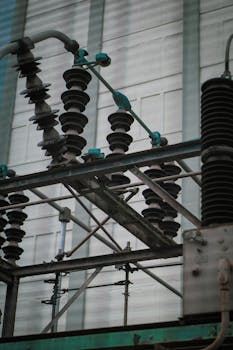
**
Amidst the swirling uncertainty surrounding global tariffs and trade wars, investors are scrambling to find safe havens for their portfolios. While market volatility is the norm, the current climate demands a more discerning approach. One strategy gaining traction is focusing on companies with strong pricing power – businesses capable of passing increased costs onto consumers without significantly impacting demand. Investment firm Robeco highlights this strategy as crucial for navigating these turbulent waters, suggesting that these companies are better positioned to outperform in the face of tariff-related headwinds. This article delves into why pricing power is so vital now and identifies sectors and companies likely to benefit.
Understanding Pricing Power in a Tariff-Heavy World
Pricing power, simply put, is a company's ability to raise prices without experiencing a significant drop in sales volume. This ability is a critical differentiator in times of economic uncertainty, especially when dealing with increased input costs driven by tariffs. Companies without strong pricing power are forced to absorb these increased costs, squeezing profit margins and potentially impacting their bottom line. Those with pricing power, however, can mitigate these impacts by passing on the costs to consumers.
This isn't about price gouging; it's about brand strength, market dominance, and the inherent value proposition of their goods or services. Companies achieving this often possess strong brand loyalty, offer differentiated products or services with few substitutes, or operate in markets with inelastic demand (meaning demand doesn't change much even with price increases).
Factors Contributing to Pricing Power:
- Strong Brand Recognition: Consumers are more likely to accept price increases from brands they trust and associate with quality. Think of premium brands like Apple or Nike.
- Unique Products/Services: Companies offering unique or differentiated products with few comparable alternatives have greater pricing flexibility. Innovative pharmaceuticals or specialized technology firms often fit this description.
- Market Dominance: Companies holding a significant market share often have more leverage to increase prices. This is particularly true in oligopolies (markets with a few dominant players).
- Inelastic Demand: Products or services with inelastic demand, such as essential goods or those with few substitutes, can withstand price increases better than luxury goods or easily replaceable items. Consider utilities or certain healthcare services.
- Cost Leadership: Even with strong pricing power, efficient cost management is key. Companies that are cost leaders often have more flexibility in adjusting pricing strategies.
Sectors with High Pricing Power Potential:
Robeco's analysis, and general market sentiment, suggests several sectors are particularly well-positioned to weather the tariff storm thanks to their inherent pricing power:
1. Technology:
The technology sector, particularly within software and cloud services, often exhibits strong pricing power. Software-as-a-Service (SaaS) companies, for example, often have sticky contracts and recurring revenue streams, allowing them to absorb cost increases or pass them on gradually. This sector also benefits from network effects and high switching costs. Look for companies with subscription models and strong customer retention rates.
2. Healthcare:
Pharmaceutical companies and medical device manufacturers often possess significant pricing power due to the critical nature of their products and the limited availability of substitutes. While regulation plays a role, these companies generally have the ability to adjust pricing to offset increased input costs. However, it's important to note that this sector is subject to regulatory scrutiny.
3. Consumer Staples:
While not all consumer staples companies enjoy robust pricing power, those with strong brands and differentiated products tend to fare better. Think of premium food brands or personal care companies with a loyal following. These companies can usually pass on price increases without significantly impacting consumer demand.
4. Luxury Goods:
Counterintuitively, luxury goods companies often maintain pricing power even during economic downturns. Their clientele is less price-sensitive, valuing exclusivity and brand prestige.
Identifying Companies with Pricing Power:
Identifying companies with resilient pricing power requires careful analysis. Investors should consider the following metrics:
- Gross Profit Margin: A consistently high and stable gross profit margin suggests strong pricing power.
- Pricing History: Examine the company's historical pricing actions and the corresponding impact on sales volume.
- Brand Strength: Assess brand recognition, customer loyalty, and the company's market positioning.
- Competitive Landscape: Analyze the competitive dynamics of the industry and the company's market share.
- Input Cost Sensitivity: Evaluate the company's exposure to tariff-affected inputs.
Navigating Tariff Uncertainty with Pricing Power Stocks
While no investment is entirely risk-free, focusing on companies with robust pricing power can offer a degree of protection against the uncertainty surrounding global tariffs. By carefully analyzing the factors discussed above, investors can identify companies that are likely to outperform in this challenging environment. Remember to conduct thorough due diligence and consider diversifying your portfolio across multiple sectors to mitigate risk. The current geopolitical landscape underscores the importance of a well-considered investment strategy, and understanding pricing power is a key element of navigating these complex times. This approach isn't a silver bullet, but it provides a valuable framework for building a more resilient investment portfolio in the face of global trade uncertainties and rising inflation. Remember to consult with a financial advisor before making any investment decisions.




















